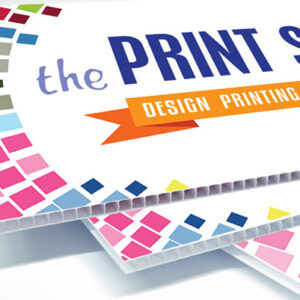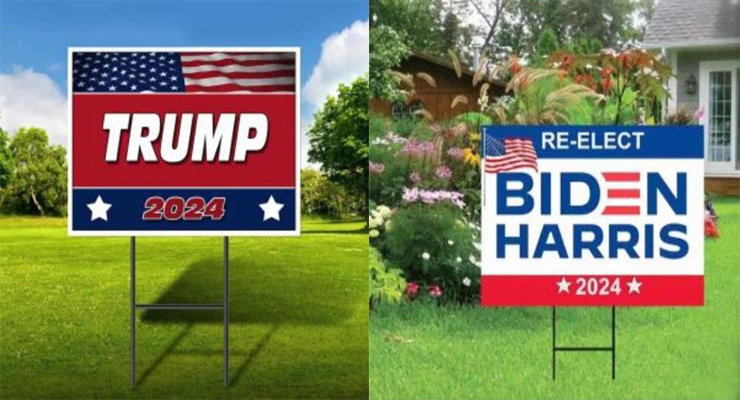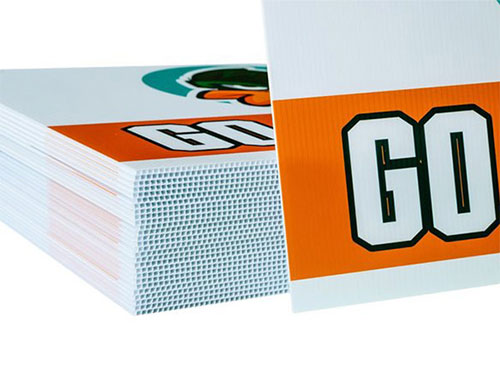
In the world of temporary signage, Coroplast signs vs Corflute signs is a common debate among advertisers, event planners, real estate agents, and business owners. At first glance, the two terms may appear interchangeable—and for many practical applications, they are. However, understanding the nuances between the two can help you make smarter buying decisions, especially when it comes to durability, branding, sourcing, and price points.
This article breaks down everything you need to know about Coroplast signs vs Corflute signs, from materials and applications to market differences and supplier considerations. Whether you’re a first-time buyer or a seasoned print professional, this guide will help you determine which option suits your signage needs best.

Before diving into comparisons, it’s important to define each term.
👉 In short: Coroplast and Corflute are regionally favored brand names for the same base material—corrugated polypropylene.

Let’s start with what they have in common.
These shared features explain why many customers assume Coroplast and Corflute are identical. However, there are some notable differences you should consider.
| Feature | Coroplast Signs (North America) | Corflute Signs (Australia/NZ) |
|---|---|---|
| Brand Origin | Trademarked by Coroplast LLC (USA) | Trademarked by Corex (Australia) |
| Regional Availability | Primarily used in USA and Canada | Common in Australia, NZ, UK |
| Thickness Variety | More variation in larger sheets | Common in 3mm and 5mm |
| Print Technology | UV flatbed, screen print, vinyl mount | UV flatbed, digital direct print |
| Color Options | White, yellow, blue, black, custom | Mostly white, limited color range |
| Pricing | Slightly higher in Canada | Slightly more affordable locally |
| Shipping Considerations | Broad supplier network across USA | More regional sourcing and freight cost |
While the material performance between Coroplast signs and Corflute signs is virtually identical—both being twin-wall polypropylene sheets—the difference lies in local manufacturing, branding, and distribution. In North America, “Coroplast” has become a brand standard, especially for political signage and real estate. In Australia and New Zealand, “Corflute” dominates the market due to its wide availability, making it more cost-effective in those regions. When comparing Coroplast signs vs Corflute signs, the decision is less about product quality and more about logistics, brand familiarity, and print supplier compatibility.

Despite the branding difference, both Coroplast signs and Corflute signs are used extensively across a wide range of industries. Their versatility, lightweight design, and cost-effectiveness make them ideal for temporary and semi-permanent signage needs. Here’s where you’ll most often find them:
Political Campaign Signs
These signs are a staple during election seasons. Candidates and parties rely on them for mass outreach because they’re:
Lightweight and easy to install using H-stakes or grommets
Cost-effective for large-volume printing
Weather-resistant enough to last weeks outdoors without fading or sagging
Real Estate Signage
Whether it’s a “For Sale” or “Open House” sign, Coroplast and Corflute are popular with agents because:
They support vibrant full-color printing
They can be laminated with vinyl for reuse
They’re easy to replace or customize for different listings
Event and Directional Signage
Festivals, fun runs, community events, and exhibitions often require:
Clear directional signage
Temporary sponsor advertisements
Lightweight, easy-to-transport materials
Coroplast and Corflute provide all of these in a format that’s simple to set up and remove.
Safety and Construction Notices
Construction companies use these signs for:
Mandatory PPE (Personal Protective Equipment) reminders
“Danger” and “No Entry” zones
Site regulations and wayfinding
Coroplast signs, in particular, are favored for their sturdiness in harsh environments.
Indoor Promotions and POP Displays
In retail settings like grocery stores, shopping malls, and trade shows, these boards are used for:
Hanging point-of-purchase (POP) signage
Temporary product displays
Informational graphics
They’re easy to cut, print on, and hang without damaging surfaces.
Ultimately, the Coroplast signs vs Corflute signs discussion isn’t about what you can do with them—they serve the same applications—but more about regional supplier preferences, local branding, and compatibility with print technology.

In terms of performance, both materials last 1 to 3 years outdoors depending on environmental exposure.
| Condition | Performance Notes |
|---|---|
| UV Exposure | May yellow slightly over time (unless UV-treated) |
| Rain & Moisture | Waterproof and mildew-resistant |
| Wind | Holds up well unless in extreme storm conditions |
| Indoor Use | Indefinite lifespan if not exposed to sunlight |
Some suppliers offer UV-resistant coatings or lamination options that extend the life of Coroplast or Corflute, making them suitable for semi-permanent signage outdoors.
Both Coroplast and Corflute signs support a wide range of printing and customization options that make them versatile for many applications:
A subtle yet important difference is that in Australia, Corflute boards often feature uniform fluting and a smoother surface quality due to local manufacturing standards. This makes them particularly well-suited for double-sided signage, where print clarity on both sides is essential.
In contrast, some North American Coroplast boards may have slightly more pronounced fluting lines, which can sometimes affect ultra-high-resolution prints. However, this effect is generally minimal and does not impact most typical signage uses, such as political signs or real estate boards.
Overall, both materials offer excellent printability and customization, with regional nuances catering to specific market demands.

| Thickness | Common Use Cases |
|---|---|
| 3mm | Event signs, short-term promotions |
| 5mm | Real estate, construction, business |
| 10mm | Structural displays, safety signs |
Coroplast signs vs Corflute signs doesn’t impact thickness availability much, though 10mm boards are more readily stocked in North America.
Standard sizes include:
Polypropylene is classified as a #5 recyclable plastic, but disposal options vary by region.
Choosing responsibly printed signage and minimizing single-use applications can reduce environmental impact regardless of whether you choose Coroplast or Corflute.
| Sign Type | Average Price (per sq ft) | Bulk Discounts | Minimum Order |
|---|---|---|---|
| Coroplast Signs (US) | $1.50 – $3.50 | Yes | 1 unit |
| Corflute Signs (AU) | AUD $10 – $25 | Yes | 5–10 units |
Note that shipping and printing services can alter the final cost significantly. Choosing a local supplier is often the best way to save on freight charges and turnaround time.

Here’s a quick summary of when to use each:
Ultimately, both materials offer similar performance, and the coroplast signs vs corflute signs debate is more about geography and brand recognition than technical differences.
Q: Are Coroplast and Corflute signs waterproof?
Yes, both are fully waterproof and UV-resistant.
Q: Can I print on both sides of Coroplast and Corflute?
Absolutely. Just request double-sided printing from your supplier.
Q: Which one is stronger—Coroplast or Corflute?
They have identical strength properties when comparing the same thickness and quality grade.
Q: Are these signs easy to cut?
Yes. They can be trimmed with utility knives or die-cut during production.
Q: Can I mount Corflute or Coroplast signs on fences or poles?
Yes. You can use grommets, double-sided tape, cable ties, or metal stakes.

When comparing Coroplast signs vs Corflute signs, the final decision often comes down to location, supplier, and project scope. Both materials offer excellent performance for short- to mid-term signage and are highly customizable. While Coroplast is preferred across North America, Corflute rules in Australia and surrounding markets.
At the end of the day, you’ll be well served by either—just be sure to work with a reputable manufacturer or print provider that understands your specific needs, timeline, and budget.
Looking to purchase high-quality corrugated plastic signs? Whether you need Coroplast or Corflute, we can deliver. Contact us today for a quote tailored to your region.
